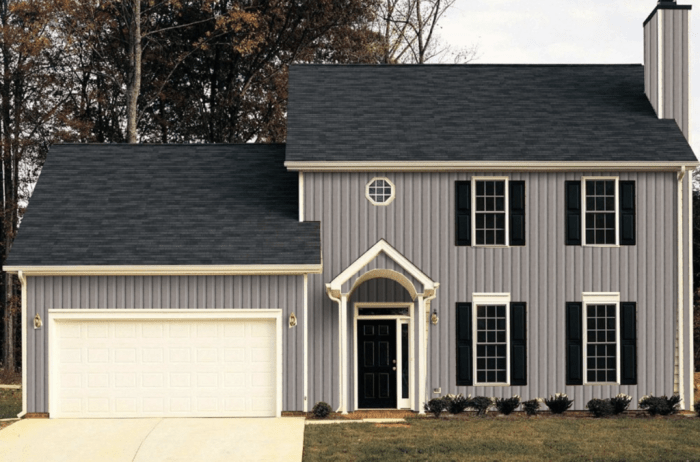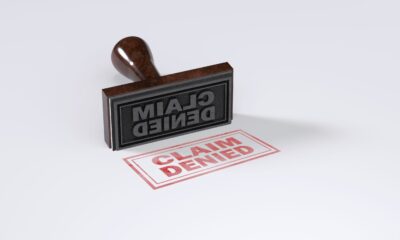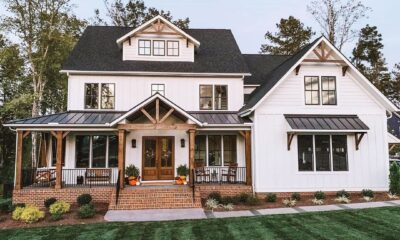General
Metal Siding for Houses: Enhancing Durability and Curb Appeal

Exploring the world of metal siding for houses unveils a realm of durability and aesthetic enhancement. From its energy efficiency to low maintenance requirements, metal siding offers a unique blend of practicality and style that can transform any home. Dive into the details of this versatile housing solution and discover the benefits that make it a popular choice among homeowners.
Benefits of Metal Siding for Houses
Metal siding offers numerous benefits that make it a popular choice for homeowners looking for a durable and energy-efficient option that enhances the curb appeal of their homes.Metal siding is known for its exceptional durability, providing long-lasting protection for homes against harsh weather conditions such as heavy rain, strong winds, and extreme temperatures.
Unlike other materials that may warp, rot, or crack over time, metal siding remains strong and intact, requiring minimal repairs or replacements.In terms of energy efficiency, metal siding is a top choice due to its ability to reflect sunlight and heat away from the house, helping to maintain a comfortable indoor temperature and reduce energy costs.
This can lead to significant savings on heating and cooling bills over time, making metal siding a cost-effective option for homeowners.Another advantage of metal siding is its low maintenance requirements. Unlike wood siding that may need frequent painting or staining to prevent deterioration, metal siding typically only requires occasional cleaning with soap and water to maintain its appearance.
This saves homeowners time and money on maintenance tasks, allowing them to enjoy their homes without constant upkeep.Additionally, metal siding comes in a variety of colors, textures, and finishes, allowing homeowners to customize the look of their homes and increase their curb appeal.
Whether you prefer a modern, sleek design or a more traditional appearance, metal siding can easily complement any architectural style and elevate the overall aesthetic of your home.
Durability of Metal Siding
Metal siding is highly durable and can withstand harsh weather conditions, providing long-lasting protection for homes.
Energy Efficiency of Metal Siding
Metal siding reflects sunlight and heat away from the house, helping to maintain a comfortable indoor temperature and reduce energy costs.
Low Maintenance Requirements of Metal Siding
Metal siding typically only requires occasional cleaning with soap and water to maintain its appearance, saving homeowners time and money on maintenance tasks.
Enhanced Curb Appeal
Metal siding comes in a variety of colors, textures, and finishes, allowing homeowners to customize the look of their homes and increase their curb appeal.
Types of Metal Siding Materials
Metal siding for houses comes in various materials, each with its own unique characteristics and benefits. Let's explore the different types of metal siding materials to help you make an informed decision for your home.
Aluminum Siding
- Aluminum siding is lightweight and easy to install, making it a popular choice among homeowners.
- It is resistant to corrosion, making it a durable option for houses located in areas with high humidity or coastal regions.
- Aluminum siding is available in a wide range of colors and finishes, allowing for customization to suit your aesthetic preferences.
- However, aluminum siding may dent easily and is prone to fading over time, requiring occasional maintenance.
Steel Siding
- Steel siding is known for its strength and durability, offering excellent protection against harsh weather conditions.
- It is resistant to impact and fire, making it a secure option for homeowners looking for added safety.
- Steel siding is available in various textures and profiles, providing a modern and sleek look for your home exterior.
- On the downside, steel siding can be prone to rust if not properly maintained, requiring periodic painting or coating.
Zinc Siding
- Zinc siding is a sustainable and eco-friendly option, as it is fully recyclable and has a long lifespan.
- It develops a natural patina over time, giving it a unique and attractive appearance that changes with weather exposure.
- Zinc siding is low-maintenance, requiring minimal upkeep to preserve its aesthetic appeal.
- However, zinc siding tends to be more expensive upfront compared to other metal siding materials.
Installation Process of Metal Siding

Metal siding installation involves several steps to ensure a proper and long-lasting finish on your house exterior. It is essential to follow the correct procedure and use the right tools and equipment for the job.
Steps for Installing Metal Siding
- Prepare the House Exterior: Remove any existing siding, repair damaged areas, and ensure a clean and smooth surface for the new metal siding installation.
- Measure and Cut the Metal Panels: Accurately measure the dimensions of the walls and windows to cut the metal panels accordingly.
- Install Starter Strips: Begin by installing starter strips at the bottom of the wall to provide a secure base for the metal siding panels.
- Secure the Panels: Attach the metal siding panels to the wall using nails or screws, making sure to leave room for expansion and contraction.
- Overlap Panels: Ensure that each panel overlaps the previous one to prevent water infiltration and create a seamless look.
- Finish with Trim Pieces: Complete the installation by adding trim pieces around windows, doors, and corners for a polished appearance.
Tools and Equipment Needed for Metal Siding Installation
- Tape Measure
- Tin Snips or Metal Cutting Shears
- Hammer or Screwdriver
- Nails or Screws
- Level
- Chalk Line
- Ladder or Scaffolding
Tips for Ensuring a Proper and Long-Lasting Metal Siding Installation
- Follow Manufacturer's Instructions: Always refer to the manufacturer's guidelines for installation to ensure proper techniques and best results.
- Properly Seal Joints: Use sealant to seal joints and seams to prevent water infiltration and enhance the siding's durability.
- Allow for Expansion: Leave space for the metal panels to expand and contract with temperature changes to prevent buckling or warping.
- Maintain Proper Ventilation: Ensure adequate ventilation behind the siding to prevent moisture buildup and avoid potential damage.
Preparing the House Exterior for Metal Siding Installation
Before starting the installation process, it is crucial to:
- Inspect and repair any damage to the existing wall surface.
- Clean the walls thoroughly to remove dirt, debris, and any mold or mildew.
- Apply a weather-resistant barrier or insulation to improve energy efficiency and protect the walls.
- Check for proper flashing around windows, doors, and corners to prevent water intrusion.
Maintenance and Care for Metal Siding

Metal siding is a durable and low-maintenance option for houses, but it still requires some care to keep it looking its best and functioning properly. Regular maintenance tasks and proper cleaning can help extend the lifespan of metal siding and address any issues that may arise.
Regular Maintenance Tasks
- Inspect the metal siding annually for any signs of damage, such as dents, scratches, or rust.
- Trim back any foliage or vegetation that is touching or rubbing against the siding to prevent damage.
- Check the caulking and sealants around windows, doors, and trim to ensure they are intact and reapply if necessary.
- Clean gutters regularly to prevent water from overflowing onto the metal siding.
Cleaning Metal Siding
- Start by rinsing the siding with a garden hose to remove any loose debris.
- Mix a solution of mild detergent and water, then use a soft brush or cloth to scrub the siding gently.
- Rinse the siding thoroughly with clean water to remove any soap residue.
- For tougher stains or mildew, use a solution of vinegar and water or a specialized metal siding cleaner.
Addressing Dents or Scratches
- For minor dents, use a rubber mallet to gently tap the area from the inside to push the dent out.
- For scratches, touch up the area with matching paint to prevent rust from forming.
- If the damage is severe, consider consulting a professional to repair or replace the affected section of metal siding.
Extending Lifespan through Proper Care
- Regularly inspect and clean the metal siding to prevent damage and corrosion.
- Address any issues promptly to prevent them from worsening over time.
- Avoid using harsh chemicals or abrasive tools that can scratch or damage the metal siding.
- Consider applying a protective coating or sealant to the metal siding to enhance its durability and resistance to the elements.
Conclusion
In conclusion, metal siding for houses presents a winning combination of strength, beauty, and longevity. Whether you're considering a new installation or seeking tips for maintenance, the world of metal siding is ripe with possibilities to elevate your home's exterior.
Embrace the durability and charm that metal siding can bring to your living space, and watch as your house shines with a fresh, modern appeal.
Frequently Asked Questions
Is metal siding more durable than other materials?
Yes, metal siding is known for its exceptional durability, standing strong against various weather conditions and resisting wear and tear over time.
What are the common types of metal siding materials used for houses?
Common types include aluminum, steel, and zinc, each offering unique characteristics in terms of aesthetics and longevity.
How can I maintain metal siding effectively?
Regular cleaning and inspection, along with addressing any dents or scratches promptly, can help maintain the appearance and integrity of metal siding.

-

 General8 months ago
General8 months agoBest Insurance Lawyers Near Me for Claim Disputes: Your Ultimate Guide to Legal Assistance
-

 General8 months ago
General8 months agoNavigating Insurance Claim Denial Lawyers Near Me
-

 Design8 months ago
Design8 months agoOutdoor Design Essentials for a Holistic Lifestyle: Integrating CRM Automation for Lifestyle eCommerce Brands
-

 General8 months ago
General8 months agoWellness Lifestyle and Outdoor Living Integration Tips: Modern Farmhouse Exterior Ideas for Luxury Lifestyle Homes
-

 General8 months ago
General8 months agoThe Best Business Insurance for Interior Designers: A Comprehensive Guide
-

 General8 months ago
General8 months agoCrafting a Comprehensive Guide to Medical Malpractice and Insurance Settlement Law Firms
-

 General8 months ago
General8 months agoHow Exterior Renovations Affect Your Home Insurance Rates: A Comprehensive Guide
-

 General7 months ago
General7 months agoDigital health trends transforming Asia in 2025: A Glimpse into the Future of Healthcare




